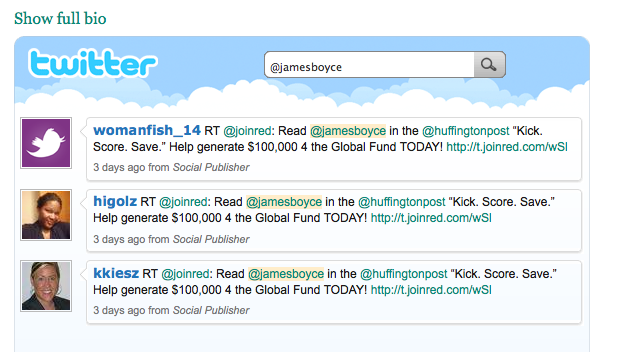The world in which we live and I work is one that is changing at light speed. We are living Moore's Law; the founder of Intel theorized that computer power doubles approximately every eighteen months. A generation ago, the power that was being doubled was significantly less than that which is being doubled now. Famously, a new car has more computer power than an Apollo landing module. The iPad is really the Ipod doubled, and then some.
So now, everyone's attention is turning to not just building Social Networks but also to optimizing. Increasingly, our company is helping groups with what we are calling Social Media Optimization, or SMO -- how do you get the most out of the networks you have spent so much time building?
Our clients have Facebook groups ranging from 1,000 fans (I still call them fans, likers just doesn't make any sense) to over 500,000 fans. Regardless of the size, the core issue is how you communicate with these fans to keep them engaged, keep them active and empower them to help you in your mission -- no matter what that mission is. But before we get to the SMO part, let's take a step back and look at two basic rules we often see that groups and organizations are not following.
The first rule is that while it is your page, it is not your community. We always recommend that clients default their Facebook pages to "Your Name + Others" for some pretty simple reasons. It's not much of a message to send to your followers that your news goes front and center and everyone sees it, but if they want to take the time and effort to put something up, well, that has to be hidden. Yes, this does mean more monitoring of your page, but think about it, don't you want to do anything possible to encourage your fans to engage with you and other fans? There are more things like this to consider but this is really the first and most important. Make your fans' ideas as important as your ideas.
The second rule is what you post. And here it is important to remember two things. First, you can post a lot of content on your Facebook page as long as it is good, relevant content. The key is that it be relevant not to you, but to your fans. They, not your internal needs, are your audience and your primary consideration. You, ultimately, are going to ask for something from them, sign a letter, give a donation, volunteer, something, so in turn, you need to provide them with interesting and important content to keep them engaged. Sure, your organization's blog posts matter, and you want everyone to see but really if your group is, say, a group on birds, and your fans are all birders, the issue is to help keep them up to date on what is happening in the bird world. Some of that will be your content, some might not, but the important thing is to provide the content they want to see.
If you're following these two rules and if your group is of reasonable size, then the time comes when you can activate the group more aggressively.
We saw a great example of this last week with our client (RED) who partnered with Yahoo! on the first day of the World Cup. Yahoo's online game, Penalty Shootout, went (RED) for the day and for every goal scored, up to 100,000 goals, Yahoo donated $1 to The Global Fund, (RED)'s on the ground partner in Africa in the effort to save the lives of those living with AIDS.
I wrote a blog post about it here and that post was used as the reminder piece of content within (RED)'s formidable social networks. It was tweeted to over one million followers, Facebooked to another 500,000 plus folks and then it (along with other efforts like a dedicated email and support from partners I hastened to add) took off within those networks, and by noon last Friday, the $100,000 goal had been met. Or should I say goals had been met?
Here you can see how it moved through the Twitterverse.

The point is that (RED) has spent significant time, energy and effort obsessively building those networks. They then created a great moment with a major partner, Yahoo!.
We created a single piece of content that could then be sent through those networks. And because (RED) has always treated those networks well, and grown them smartly, and engaged with them, the people within the networks returned the favor.
And $100,000 is going to help save lives in Africa. Score.
